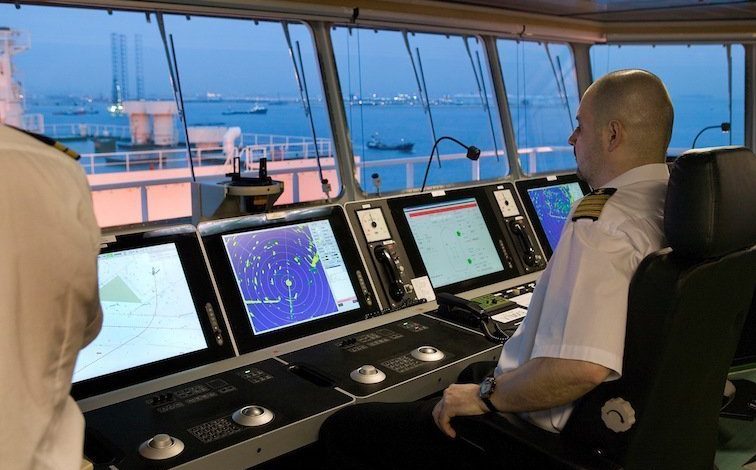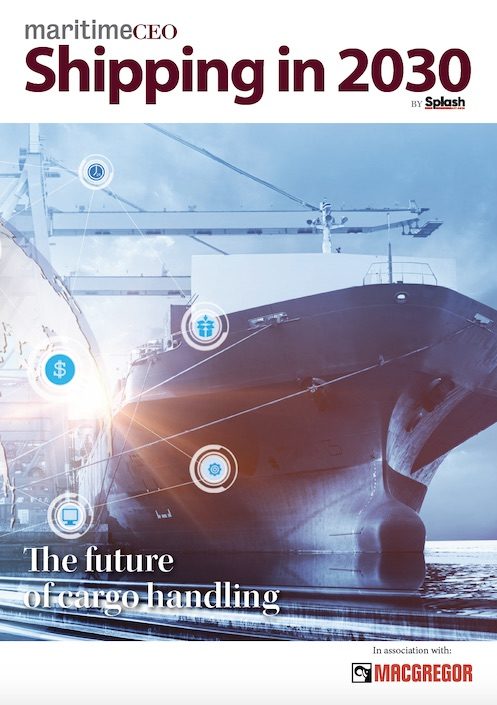The creation of the integrated digital ship

A survey of upcoming tech trends carried out for our new Shipping in 2030 magazine, published in association with MacGregor, has a strong focus on ship performance.
The maritime technology outlook for the coming years is very much about vessel optimisation according to a survey of owners, operators and managers carried out by this title.
The fragmented nature of the tech providers and the naturally conservative, cost-conscious shipowning set will put the brakes on any huge technology changes.
We’re seeing the creation of the integrated digital ship
“The obvious first driver this year is technology that can deliver genuine fuel savings, lower emissions and better vessel performance,” says Tore Morten Olsen, president of maritime at Marlink.
In support of that, Olsen says simplified data collection for efficiency and compliance is increasingly vital. Owners need systems that can remotely connect bridge system data with communications infrastructure to give them access to a vessel data dashboard on a per vessel basis.
Leif Bystrom, chief operating officer at MacGregor, says, “Our customers are asking for solutions to improve their performance. To keep ahead of the competition they need state-of-the-art solutions and systems so their work becomes more efficient.”
As Magnus Sjöberg, senior vice president at MacGregor’s merchant solutions division, puts it: “Clients are asking for waste in the whole logistic chain to be reduced.”
IT as a differentiator
According to Rajesh Unni, the CEO of Singapore shipmanager Synergy Marine Group, “The industry has started seeing IT as a differentiator rather than an enabler. The challenge remains in trying to find ways to make the best use of technology.”
Clients are asking to reduce the waste in the whole logistic chain
Dennis Mol, vice president, digital and business transformation at MacGregor, says that customers are asking for two things in the current environment – aid to operate as efficiently as possible and a quick response time.
Quite so, concurs Daniel Lundberg, a director working with Mol on developing MacGregor’s digital solutions.
“Customers want increased profitability and increased use of their ships. We can do this using big data, monitoring and supporting our equipment remotely to harness data and evaluate information before anything happens,” Lundberg says.
This is something MacGregor is already doing with its OnWatch Scout service which is taking condition monitoring and predictive maintenance to the next level.
The smart ship
“Artificial intelligence (AI) can be used to harness both shipboard and external data to optimise vessel performance and thus reduce excess fuel consumption and, consequently, emissions,” says Gil Ofer, head of open innovation at Eastern Pacific Shipping.
To see the most significant gains from AI, however, Ofer points out that the use of high-frequency data coming from sensors will be necessary, and as such, the Internet of Things (IoT) will be a top theme for the coming year.
Manish Singh, the recently installed CEO of Videotel and Seagull, agrees with Ofer, arguing that we are on the cusp of the real adoption of the Internet of Maritime Things, as he describes it. Stronger and cheaper connectivity to ships, MESH networks onboard, greater use of sensor technology, vessel position and operational data, will deliver significant new digital tools, he says.
For Alexander Saverys, CEO of Belgian shipping giant CMB and one of the industry’s hydrogen pioneers, fuel developments are unsurprisingly his top pick for the year ahead.
“I’m not expecting any major large-scale breakthroughs because a lot of research is still in its early stages,” Saverys says, adding that he anticipates “smaller, but nevertheless meaningful breakthroughs”, which will serve as valuable testbeds in the development of larger applications.
Like other owners polled, the CMB boss says his company is focusing sharply on improved digital fleet performance monitoring. “The higher the fuel cost, the higher the potential savings,” he says.
Morten Lind-Olsen, CEO of Dualog, picks up on this widely held perception that digital fleet performance monitoring will grow strongly in the coming year. This is in no small part down to the impact of increased bandwidth at sea, he points out.
“We’re seeing the creation of the integrated digital ship,” he says. “This is partly linked to the bandwidth issue, but as I see it there is a huge focus on increased business efficiency through consolidated ships operations.”
This goes all the way from automating human/manual interactions through digital solutions to increasing machine to machine interactions through IoT data and sensor-database exchanges, Olsen explains, something that will drive more analysis and systematised planning ashore.
Olsen’s predictions are not dissimilar to Henrik Hyldahn’s, the CEO of ShipServ, who says: “The continued upgrading in IT infrastructure within shipping will create the platform to accelerate the use of data and analytics, which provides owners and operators with real transparency to analyse their organisations and business models, driving efficiencies and optimising performance and profitability. In line with this, throughout the coming months we will also see further progression in automation, which will lay the foundation for cognitive systems and intuitive interfaces, which – from a procurement perspective – will be a key element in its ongoing digitalisation.”
Big data
In Hong Kong, William Fairclough, the managing director of Wah Kwong Maritime Transport Holdings, reckons the coming year will see Big Data change the business of shipping with a host of competing platforms coming online promising to deliver unprecedented insight into the movement of cargoes around the globe.
Tommi Keskilohko, director of customer solutions at MacGregor, taps into this theme and puts it in the context of providing customers solutions to grow the earnings potential of each ship. He goes on to cite the company’s innovative Breakbulk Optimiser, which uses algorithms to work out the storage of a breakbulk vessel to optimise the carrying capacity and stowage options. Something that used to take days of planning is now done in an hour, he says, observing that the commercial window available to a customer suddenly opens by a day as a result.
“We’re tapping into the revenue streams of our customers,” Keskilohko says.
Turning specifically to the liner trades, Thomas Bagge, CEO of the Digital Container Shipping Association, reckons we will see a continued acceleration of smart container usage, greater adoption of blockchain-enabled platforms and like Ofer at Eastern Pacific, increased use of AI.
“What will hold the industry back from leveraging technology to achieve breakthrough results is if we repeat the same patterns of behaviour from the past,” Bagge says. “To move the industry forward,” he continues, “we need to collaborate on basic elements, similar to what has occurred in many other industries. When we are willing to change the way we work and proactively collaborate, we, as an industry, will truly benefit from technological advancements.”
Looking at all this technological change, Jörg Peschke, director of digital solution architecture at MacGregor, reckons many owners still need persuading, although he also highlights that they will only be convinced if the imperatives are fully transparent.
“Customers are unsure about the implementation of digital solutions and enhanced technologies,” he concedes. “The big question is also a simple one: What is my ROI on this? To answer this critical question, we work hand-in-hand with customers and are very open with our interfaces.”
To access the full Shipping in 2030 magazine, click here.


Perhaps a back check on the comments made today in a year’s time might prove “interesting”